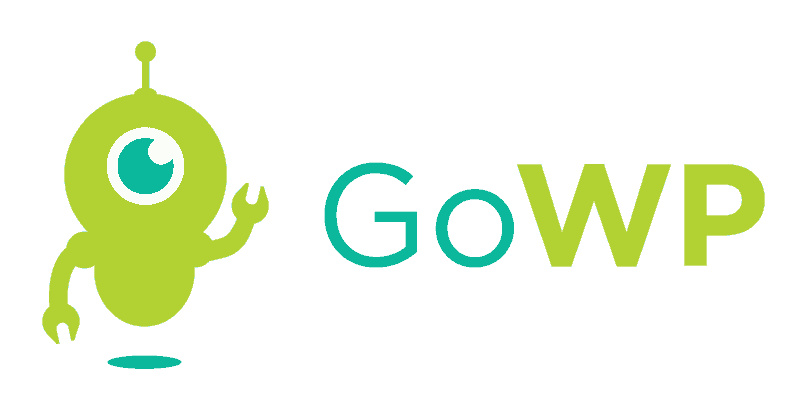Maintaining a WordPress site is an ongoing process that extends well beyond the initial development and launch. Proactive WordPress maintenance is essential to secure your website, improve performance, and ensure that it continues to meet the needs of your audience. As a service provider, this approach to maintenance is not just about keeping sites up to date; it’s about building solid relationships with your clients. Through consistent and careful upkeep, you demonstrate reliability and foster trust, which are fundamental in nurturing long-term loyalty.

Providing consistent maintenance services for WordPress websites positions you as a trustworthy partner in the eyes of your clients. By staying ahead of updates, monitoring security, and optimizing site performance, you mitigate risks that could potentially damage your client’s business and, by extension, their trust in you. In doing so, you reinforce the perception that their online presence is in capable hands. Stability and dependability in your service equate to trust from your clients, which is a key component in the formula for client retention.
The commitment to proactive maintenance translates to more than just a well-functioning website; it’s a signal to your clients that you’re invested in their success. Regular reporting, immediate issue resolution, and an open line of communication are practices that keep clients informed and involved. This transparency builds loyalty, as clients recognize the value of a partner who not only addresses current needs but also anticipates future requirements. Proactive WordPress upkeep is, therefore, crucial not only for the technical health of the websites you manage but also for nurturing the ongoing relationships that are the backbone of your business.
Understanding WordPress Maintenance
Maintaining your WordPress site is crucial for ensuring its reliability, security, and performance. It is vital to regularly perform updates, strengthen your site’s security, and optimize for peak performance.
Importance of Regular Updates
Themes and Plugins: To safeguard your website and take advantage of new features, you should regularly update your themes and plugins. Outdated themes and plugins can introduce security vulnerabilities and compromise your site’s integrity.
- WordPress Core Updates: Ensuring your WordPress core is up to date is essential for stability and security. These updates often include patches for security flaws and enhancements that improve overall functionality.
Security Checks and Measures
- Regular Security Audits: Regularly conducting security audits allows you to identify and fix potential weaknesses in your website’s defenses.
- Implement Security Plugins: Utilize security plugins to protect against common threats and to monitor for suspicious activity.
- Backups: Regular backups are a safety net for your content and should be part of your security protocol. In the event of data loss or a security breach, your backups enable you to restore your site to its previous state.
Performance Optimization Techniques
Caching: Implement caching solutions to speed up your website, as faster websites offer a better user experience and are favored by search engines.
- Database Optimization: Keep your database lean by removing unnecessary data, which can improve your website’s loading times and overall performance.
- SEO Practices: Employ SEO best practices to improve your search engine rankings. A well-maintained site with high performance contributes positively to SEO efforts and visibility online.
Creating a Proactive Maintenance Plan
Your WordPress site’s health is crucial to its success. By crafting a proactive maintenance plan, you mitigate potential issues and provide consistent, reliable performance for users.
Developing a Structured Approach
To begin developing your proactive maintenance plan, you should audit your current WordPress site to identify key areas of focus. Maintenance packages should then be tailored to these areas, encompassing tasks such as theme and plugin updates, security checks, and performance optimizations. Your approach must be systematic and documented:
- Weekly Tasks: Plugin updates, performance reviews.
- Monthly Tasks: Theme updates, security audits.
- Quarterly Tasks: SEO checks, User experience reviews.
Incorporating Continuous Monitoring
Continuous monitoring is the heartbeat of your proactive maintenance plan. Use tools that provide real-time alerts for uptime, security breaches, and performance issues. Automate regular scans to ensure you are alerted immediately when potential problems arise. This vigilance allows you to address issues before they affect your users:
- Real-time Uptime Monitoring: Ensure your site is always accessible to visitors.
- Security Monitoring: Receive alerts for potential security threats.
- Performance Monitoring: Track site speed and functionality.
Ensuring Regular Backups
Regular backups are your safety net. They should be scheduled to run automatically, ensuring that you always have a recent version of your site stored securely. Implementing a proper backup strategy involves:
- Frequency: At least a weekly backup, or more frequently for high-traffic sites.
- Storage: Use off-site, secure, and reliable storage solutions.
- Testing: Regularly test backups to confirm that they can be restored.
By incorporating these practices into your WordPress maintenance plan, you bolster site reliability, enhance user trust, and ultimately foster greater client loyalty.
Maximizing Client Relationships
To ensure the longevity and profitability of your WordPress maintenance business, focus on leveraging transparency to establish trust, customizing your services to meet specific client needs, and fostering a culture of satisfaction that encourages referrals.
Cultivating Trust through Transparency
In the context of WordPress maintenance, trust is the cornerstone of any enduring client relationship. You build trust by consistently providing clear and detailed reporting on the work completed. This includes:
- Updates on security scans and any issues addressed
- Performance enhancements implemented
- Backups conducted and their statuses
By doing so, clients feel in the loop and confident in the value of your work.
Tailoring Services to Client Needs
Understanding and responding to individual client needs is critical for achieving long-term relationships and recurring revenue. Create a table of service tiers and let your clients choose the one that aligns with their business needs. Here’s an example:
| Basic Maintenance | Standard Maintenance | Premium Maintenance |
|---|---|---|
| Weekly backups | Daily backups | Real-time backups |
| Monthly updates | Weekly updates | Daily updates |
| Quarterly performance reports | Monthly performance reports | Weekly performance reports |
Ensure that you offer the flexibility to switch between plans as their needs evolve.
Encouraging Referrals with Consistent Satisfaction
Satisfied clients are more likely to refer your services to others, contributing to a steady stream of new business. Establishing regular communication and delivering a high level of service results in consistent satisfaction. Implement the following:
- A feedback loop for clients to share their experiences.
- Incentives for referrals such as a discount on their next month of service after a successful referral.
Referrals not only expand your client base but also reinforce the trust existing clients have in your services, creating a positive feedback loop.
Enhancing User Experience
Proactive WordPress maintenance can significantly enhance the user experience on your website by focusing on design and performance optimization. Well-maintained design elements and swift load times are critical to keeping your visitors engaged and satisfied.
Leveraging Design for Engagement
Your website’s design is a powerful tool to capture and hold user attention. Ensure consistency in your design with uniform color schemes, fonts, and layout patterns. Good design should guide users effortlessly to the content they seek. Use white space judiciously to avoid overwhelming your visitors and to make content easily digestible.
- Navigation: Streamline your menu to make it intuitive.
- Accessibility: Adhere to accessibility standards to serve all users.
- Readability: Choose fonts and colors that are easy on the eyes.
Optimizing for Faster Load Times
A site’s loading speed is a cornerstone of user experience.
Image Optimization
- Compress images using tools that maintain quality but reduce file size.
- Employ lazy loading; images load only as needed.
Caching
- Implement caching solutions to store frequently accessed data.
- Utilize browser caching to reduce server requests for repeat visitors.
Performance
- Monitor response times and refine elements that cause delays.
- Regularly update WordPress, themes, and plugins for optimal performance.
Reducing load times enhances responsiveness and keeps users engaged, cementing their loyalty and trust in your WordPress website.
Securing Your WordPress Ecosystem
Securing your WordPress ecosystem is essential for protecting your site from unauthorized access and potential threats. Tightening security measures and addressing vulnerabilities promptly ensures your WordPress site remains safe and trustworthy.
Implementing Advanced Security Protocols
To fortify your WordPress site, implement SSL certificates to encrypt data transmitted between the user and the server, ensuring sensitive information such as login credentials are protected during transit. Enable two-factor authentication (2FA) to add an additional layer of security to the login process.
- SSL Certificate: Purchase and install from a reputable source.
- Two-Factor Authentication: Use plugins or native options to enforce 2FA.
Security plugins play a crucial role in your website’s security by providing features like firewall protection, malware scanning, and more. Select plugins that address a wide range of security concerns and that receive regular updates.
- Security Plugin Examples: iThemes Security, Wordfence, Sucuri Security.
- Security Checks: Schedule regular checks for vulnerabilities.
Regularly update all aspects of your WordPress site, including themes, plugins, and the core WordPress software itself, to fix known security holes.
- Set automatic updates when possible.
- Before updating, back up your website to ensure you can restore it if the update causes issues.
Handling Malware and Security Breaches
In the event of security breaches, have a systematic approach to handle incidents swiftly and effectively. Begin with immediate malware scanning and removal.
- Immediate Actions: Change all passwords to strong, unique passwords, assess the damage, and start the cleanup process with the assistance of security tools or professionals.
- Malware Scanning and Removal Tools: Use plugins designed for this purpose, ensuring they are reputable and kept up-to-date.
Post-breach, conduct a security audit to identify the breach origin and patch vulnerabilities. Educate your team and clients about best practices to prevent future incidents.
- Post-Breach Steps: Notify affected users, reset passwords, analyze breach points, and communicate openly about the breach and measures taken.
Maintaining a secure WordPress ecosystem is an ongoing process that requires attention to detail and an understanding of potential security issues. By implementing advanced security protocols and having effective measures to handle malware and security breaches, you maintain the integrity and trustworthiness of your WordPress sites.







